With a gap down and 3.78% plunge, the S&P 500 ETF (SPY) is suddenly within a few percentage points of its February low. This reaction low defines the up trend on the weekly chart. A break below this low would reverse the uptrend that has been in place since March-April 2009. The trend on the daily chart remains down, but SPY is getting way oversold. SPY is now down over 11% from its April high and 7.6% in the last five days. RSI moved into the 30-31 area for the second time in three weeks. Despite these oversold conditions, we have yet to see a selling climax or strong intraday reversal that would signal support. At the very least, we need to see some indecision before entertaining the idea of an oversold bounce.
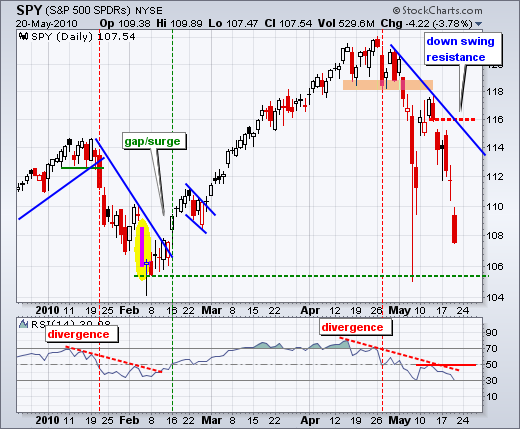

On the 30-minute chart, SPY broke below the early May closing low with a gap down on Friday. This gap is not visible on the line chart. Broken support turns into a resistance zone around 111, which is confirmed by the trendline extending up from last week's high. There is also resistance at 112 from a small reaction high. A break above the 111-112 zone is needed to reverse the short-term downtrend. Given the severity of the recent decline, some sort of healing process may be required before a sustainable bounce takes hold. Therefore, I would be inclined to ignore the first breakout. There are no key economic reports today, but EU officials are meeting in Brussels to discuss the neverending bailout.
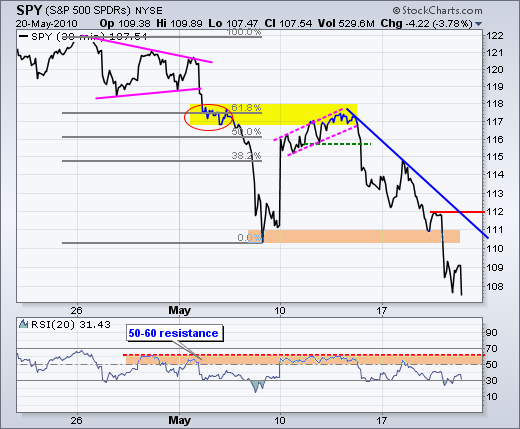
Charts of Interest: Believe it or not, there were actually a few stocks that had the nerve to move higher yesterday. AAN, ARUN, BW, GYMB, VSI, WSM
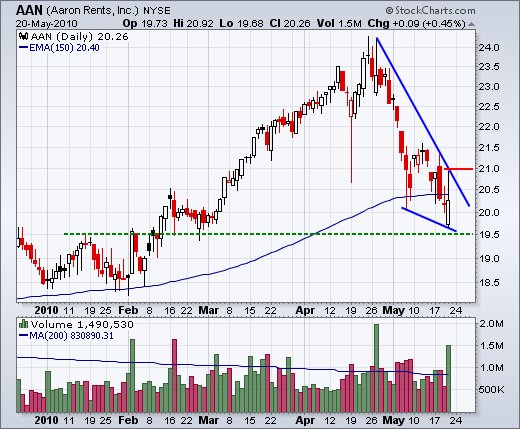
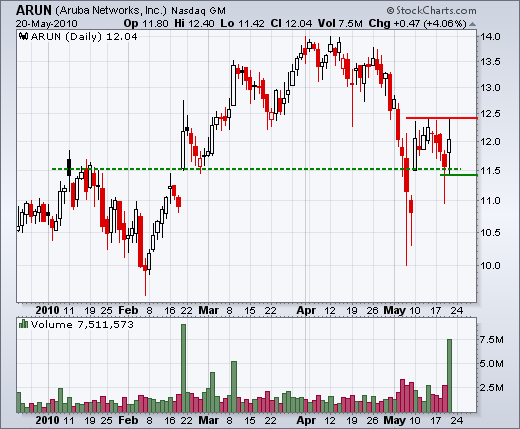
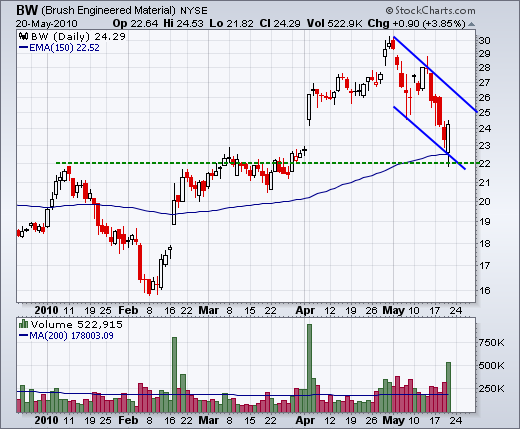
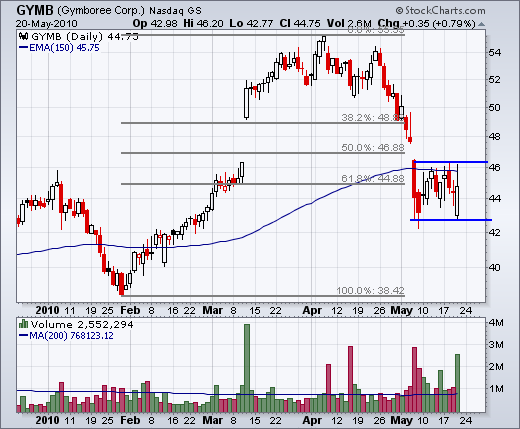
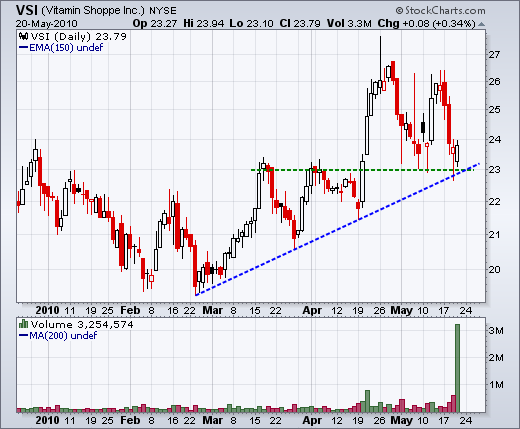
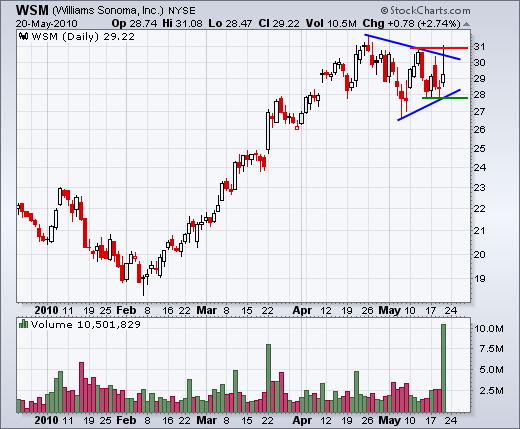
This commentary and charts-of-interest are designed to stimulate thinking. This analysis is not a recommendation to buy, sell, hold or sell short any security (stock ETF or otherwise). We all need to think for ourselves when it comes to trading our own accounts. First, it is the only way to really learn. Second, we are the only ones responsible for our decisions. Think of these charts as food for further analysis. Before making a trade, it is important to have a plan. Plan the trade and trade the plan. Among other things, this includes setting a trigger level, a target area and a stop-loss level. It is also important to plan for three possible price movements: advance, decline or sideways. Have a plan for all three scenarios BEFORE making the trade. Consider possible holding times. And finally, look at overall market conditions and sector/industry performance.

Charts of Interest: Believe it or not, there were actually a few stocks that had the nerve to move higher yesterday. AAN, ARUN, BW, GYMB, VSI, WSM






This commentary and charts-of-interest are designed to stimulate thinking. This analysis is not a recommendation to buy, sell, hold or sell short any security (stock ETF or otherwise). We all need to think for ourselves when it comes to trading our own accounts. First, it is the only way to really learn. Second, we are the only ones responsible for our decisions. Think of these charts as food for further analysis. Before making a trade, it is important to have a plan. Plan the trade and trade the plan. Among other things, this includes setting a trigger level, a target area and a stop-loss level. It is also important to plan for three possible price movements: advance, decline or sideways. Have a plan for all three scenarios BEFORE making the trade. Consider possible holding times. And finally, look at overall market conditions and sector/industry performance.

About the author:
Arthur Hill, CMT, is the Chief Technical Strategist at TrendInvestorPro.com. Focusing predominantly on US equities and ETFs, his systematic approach of identifying trend, finding signals within the trend, and setting key price levels has made him an esteemed market technician. Arthur has written articles for numerous financial publications including Barrons and Stocks & Commodities Magazine. In addition to his Chartered Market Technician (CMT) designation, he holds an MBA from the Cass Business School at City University in London.
Learn More





